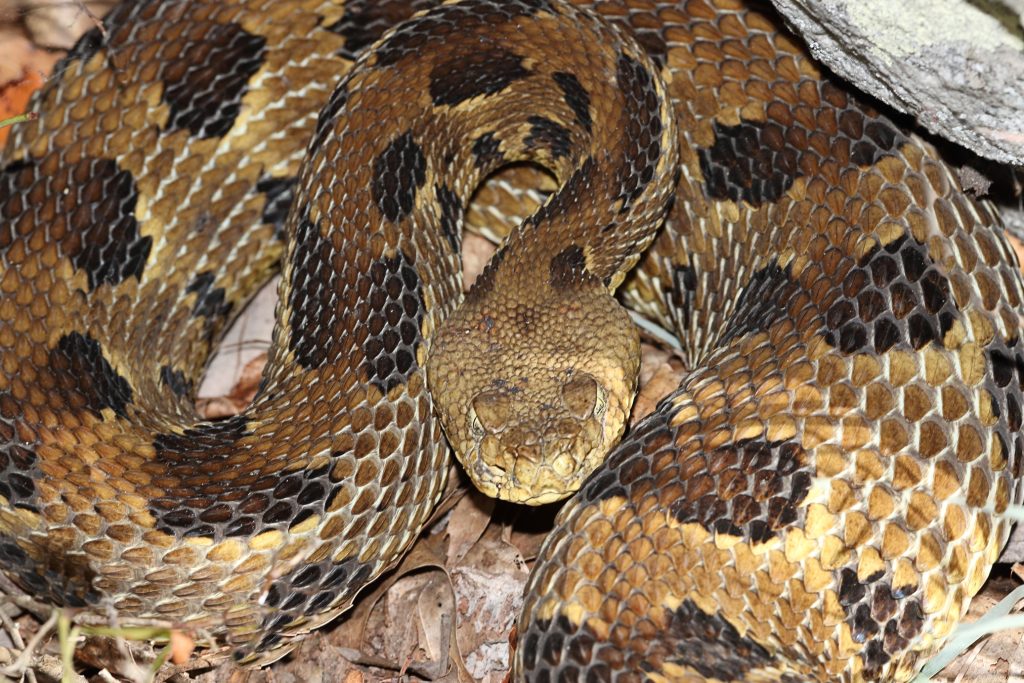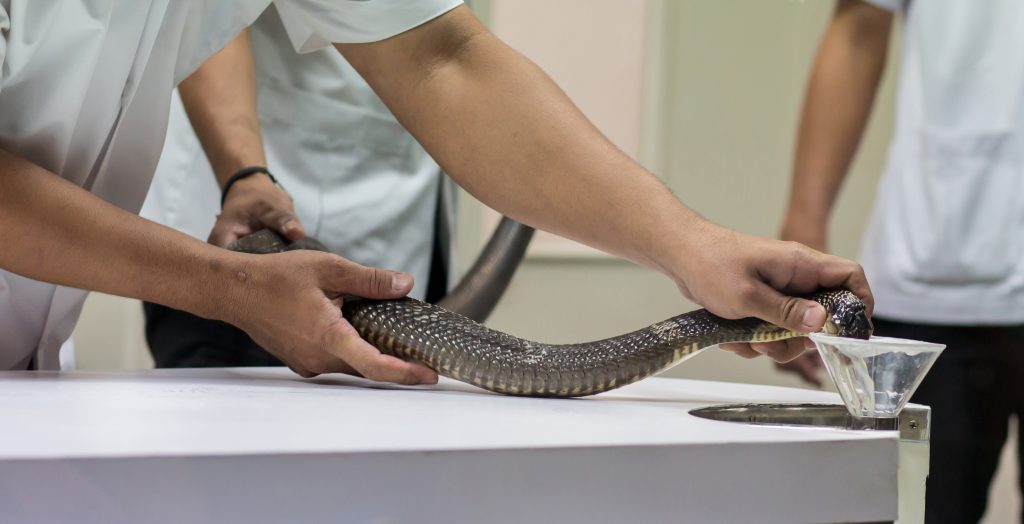Just as many concepts and conventions have changed over the years, so has the conventional thinking in the field snake bite care. What was considered the norm just 50 years ago is antiquated. As more data is available it is conceivable that what is today the latest and greatest, will one day be superseded by better more advanced treatments. Herein are the old and the new and the best explanations for the most recent recommendations.
Herpetologists (snake experts) and nature purists will argue that snakes are beneficial to the environment and mankind, and we should embrace their existence with gladness. This mantra falls on both sympathetic and skeptical ears. Many snakes capture and consume vermin; a good thing. Some venomous snakes can cause you pain and suffering. Even non-venomous snake bites can hurt you. Snakes should be treated with respect, but not fear, and by no means loathing.
Some non-venomous varieties such as king snakes eat venomous types. Sounds like a win-win to me so the king snakes in my yard get a free pass. That’s not to say I don’t get startled when I find one in the pea patch. There is a grey rat snake in my barn that does a fine job of catching mice and rats, but I hate it when it surprises me by lounging in my tractor seat. I guess you can say I, and a lot of other people I know, have a valid love-hate relationship with Mr. No-shoulders and his ilk.
Varieties of Venomous Snakes
There are four varieties of venomous snakes: Rattlesnakes, copperheads, cotton-mouths, and coral snakes. It’s really easy to learn the distinguishing features of these creatures and will be vital if and when you ever get bitten by one. All four have the distinctive head shape of a pit-viper, elliptical eye pupils, and particular scale patterns. Making such detailed study means you-re getting too close to the critter.

Steve Byland
-
Rattlesnake
Rattlesnakes come in a wide variety of shapes and sizes. The big models such as the timber rattler, and the Eastern and Western diamond backs get the most press with their impressive weight and girth. Western movies were fond of big rattlers and the tense music of the scene just heightened the sinister atmosphere. Festus Hagan starred in a Gunsmoke episode where he saved a child by sucking the venom from the youngsters wound, thus saving a life and endearing himself to the family.
-
Pigmy Rattlesnake
The Pigmy rattler is an aggressive little snake that could be said to have short-man’s syndrome. Their rattle is far quitter than their full-sized cousins’, but their bite is no-less painful. They are a big threat to dogs working in the field.
-
Copperheads
Copperheads are arguably one of the most attractive snakes in the wild. Masters of camouflage, they blend in perfectly with fall leaves and dried grasses. Rarely a fatal threat, but they can make a victim very ill. They are colored in shades of tan, light brown and copper, with the distinctive pit-viper shaped head. There is some promising research indicating copperhead venom van be useful in treating cancer.
-
Cotton Mouth
The cotton mouth is in my opinion ugly both in disposition and appearance. In my years I’ve had too strikes deflected by my boots. Both times were while working on food-plots. Cotton mouths will open their mouths in a flash of warning. Most I have seen had a very blunt tail and dark brown coloration.

Joy Ondreicka
-
Coral Snakes
Coral snakes are one of the prettiest snakes in the wild, but it usually requires a lot of work to get bitten. Their small heads and mouth are only suited for the webbing between fingers. The aforementioned snakes have a hemotoxic venom that attacks red blood cells. The coral snake packs a neurotoxin venom that paralyzes muscles, such as the diaphragm, so the victim, suffocates. Coloration is yellow, with red and black bands, same as some king snakes. The important difference is this; the yellow bands are always connected to black bands. The non-venoms scarlet king snake sports red bands on black.
Recent Do’s and Don’ts for Snake Bite Care
The point of this article is not snake identification, although at some point that is vital to treatment. Our purpose here is to teach the latest recommended field first-aid should a bite occur. You might feel a little like the old saying here; “Just when I had all the right answers, they changed all the questions,” My Boy Scout Handbook (1959 edition) had all the information to help me pass on my First-aid Merit Badge. I suspect many of us share that same knowledge. But according to Mayo Clinic and the CDC (Center for Disease Control) that has all changed. No longer is it recommended to place a tourniquet on the extremity bitten and lance the bite, and then attempt to extract the venom. For simplicity’s sake, here is the most recommended do’s and don’ts.
Field First-Aid Do’s
-
Remain Calm
There is an excellent chance you will survive this encounter. Few people are killed by snakebites each year, about the same odds as being struck by lightning.
-
Move Away From Danger
Move away, out of the snakes striking range. Call for help, a companion, spouse, co-worker or friend who can be with you the fastest.
-
Remove any Jewelry and Constricting Items
Remove rings, watches, bracelets, shoes, socks and other items that might be problematic should swelling begin suddenly
-
Call 911
Call 911 as soon as possible to alert medical personal of your situation and your proximity to the nearest emergency room where anti-venom may be on hand
-
Identify Snake if Possible
Try to identify the snake that bit you. It is not necessary to kill it, but using a cell phone to capture an image will make matters easier at the medical facility. If you kill it, place it whole in a safe place, such as a seed bag or bucket, and transport it with you. Remember, even dead snakes can react to muscle memory and bite again.
Field First-Aid Don’ts
-
Don’t attach a tourniquet to the arm or leg affected
It is better to allow the venom to spread and dissipate rather than remain in one location. Venom is intended to kill small animals such as rodents. While some flesh damage may occur, it will be less if the venom is not allowed to be concentrated.
-
Don’t apply ice packs to the wound area
Bite victims often say the bites are very hot, as well as painful.
-
Don’t drink alcohol
Don’t drink any alcoholic or carbonated beverages.
-
Don’t elevate the injured limb
Keep injured limb lower than the heart where and when possible.
-
Don’t lance the wound
Don’t lance and attempt to extract the venom from the wound.

Many a country mother practiced the same mantra just before the screen door slammed behind a child going outside to do chores; “Be sure to watch for snakes!” That remains sage advice even today. Avoidance is key to snake free trips afield. Wearing a quality pair of snake-proof boots is also wise. Good boots are available for under $100 a pair. Kevlar chaps will also work in the place of boots but only protect the ankles and lower legs.









